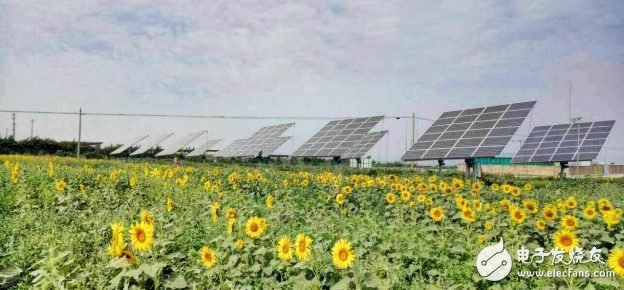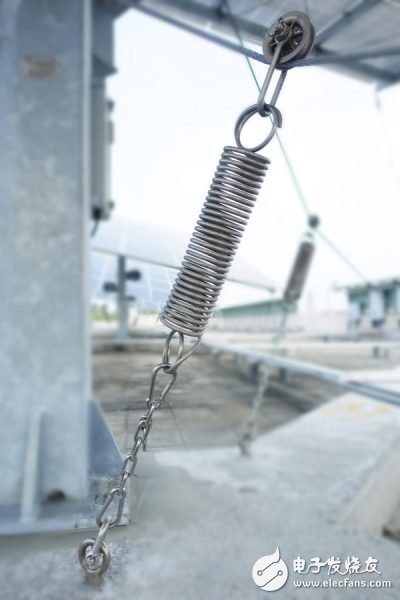The demand for solar energy is growing, and the cost per kilowatt hour is gradually decreasing. Once solar power reaches the same price as the market, it can become one of the most competitive options in the energy market, and the market can be expanded to play the role of solar energy. benefit.
Under the big goal of “the same price of electricity and electricityâ€, the solar energy industry chain has “high efficiency and low cost†as its development goal from top to bottom. The polysilicon plant is committed to optimizing the quality of the crystal. The wafer fab is actively improving the growth and slicing process. The battery plant is improving the conversion efficiency through various new technologies such as PERC, black silicon, HJT and N-type batteries. In the module and system side, different packaging methods with different bracket designs can also effectively reduce CTM Loss and improve power generation efficiency.

In recent years, there has been a wave of improved system bracket design in the international market. To increase the time it takes for the solar module to receive sunlight, the bracket tilts at a specific angle based on the local latitude difference. However, if the module itself can change the angle, it will take longer to receive sunlight directly. The chasing system has risen and has received great attention in major markets such as Japan, China, and the United States.
System-side efficiency improvement plan: chasing the date functionThe difference between the chasing system and the fixed system is that the chasing system can change the angle of the solar panel over time, so that the time for the panel to directly receive sunlight increases, thereby increasing the overall power generation of the system. According to actual case data collected by the BIG SUN Group, a Japanese-based system operator in Taiwan, the annual solar power generation system can use up to 60% more than the fixed system.
The chasing system is divided into two major categories: single-axis and dual-axis. Common classifications and main features are as follows:

Specifically, the single-axis tracking system is horizontally turned, while the two-axis tracking system has a rotating function. Considering the change in the sun angle of the four seasons, the annual power generation of the two-axis system is higher than that of the single-axis system. However, due to the simple structure and low cost of the single-axis tracking system, the operating system requires less energy and is less prone to damage. It is still the mainstream of the Japanese market.
In this regard, Luo Jiaqing, chairman of Sun Optoelectronics Group, said: "The technical difficulty of the two-axis tracking system is higher, but the power generation is also more. In contrast, the single-axis system is actually a transitional product, universality and effect. It is not as good as the two-axis system.†Sun Optoelectronics Group also has patents related to the single-axis tracking system. However, due to the fierce market competition of single-axis systems and the transitional products with lower technology, Sun Optoelectronics Group decided to “get it in one placeâ€. Committed to the development of a perfect two-axis system.
Luo Jiaqing is also optimistic about the market trend of the dual-axis chase system. He said that the market share of single-axis systems is getting higher and higher, and the technology of dual-axis will become more mature, so more operators will consider adopting two-axis systems.
Japan's actual performance, iPV Tracker has a proper rate of 99.94%The chase system has long been plagued by three major problems: First, it is easy to damage and maintain. Second, the accuracy of chasing the sun is not good. Third, the price is expensive, especially for the two-axis system. This is also the biggest difficulty encountered by the chasing system into the market.
Sun Optoelectronics' two-axis tracking system, iPV Tracker, has unique advanced technologies in both mechanical stability and accuracy. Luo Jiaqing introduced that the iPV Tracker is based on the design of the cross-axis with a large angle of rotation, and uses the steel cable with the roller to pull the module, which improves the shortcoming of the traditional double-axis with only one pivot point. The iPV Tracker is structured like a parachute or a seesaw, compact and stable, and can be rotated up to 360 degrees. This structure also allows the system to operate with minimal work and consumes only 10% of the energy of a conventional dual-axis design. .

â–² iPV Tracker's dual-axis support point structure. (Source: Big Sun Group)

â–² Roller design, low energy consumption and complete rotation angle. (Source: Big Sun Group)
With an error angle of less than 0.5 degrees, the ultra-precise chasing function is used. In terms of stability, the iPV Tracker adopts the world's first spring shock absorber, which can effectively resist the shock and collision caused by wind pressure and operation, and reduce the damage rate of the drive system. According to the actual statistics of Sun Optoelectronics Group's over 6MW case in Japan, iPV Tracker has a proper operating rate of 99.94%. This achievement also convinced more Japanese customers that iPV Tracker has successfully captured the 10MW case in Japan and became the highest-selling dual-axis market-seeker in Japan.

â–² Spring structure, good wind resistance. (Source: Big Sun Group)
Low Voltage Static Synchronous Compensator
FGI`s FGSVG series low voltage dynamic reactive power compensation and harmonic devices are mainly composed of control panels, energy storage capacitors, reactors, IGBT, inverters, fuses and other devices. The low voltage Static Synchronous Compensator (STATCOM) has functions such as compensating reactive power, controlling harmonics, balancing negative sequence current and suppressing voltage flicker.
Svc Static Var Compensator,Low Voltage Synchronous Compensator,Low Voltage Static Compensator,Low Voltage Static Synchronous Compensator,Statcom Manufacturers,Power Quality Products
FGI SCIENCE AND TECHNOLOGY CO., LTD , https://www.fgi-tech.com